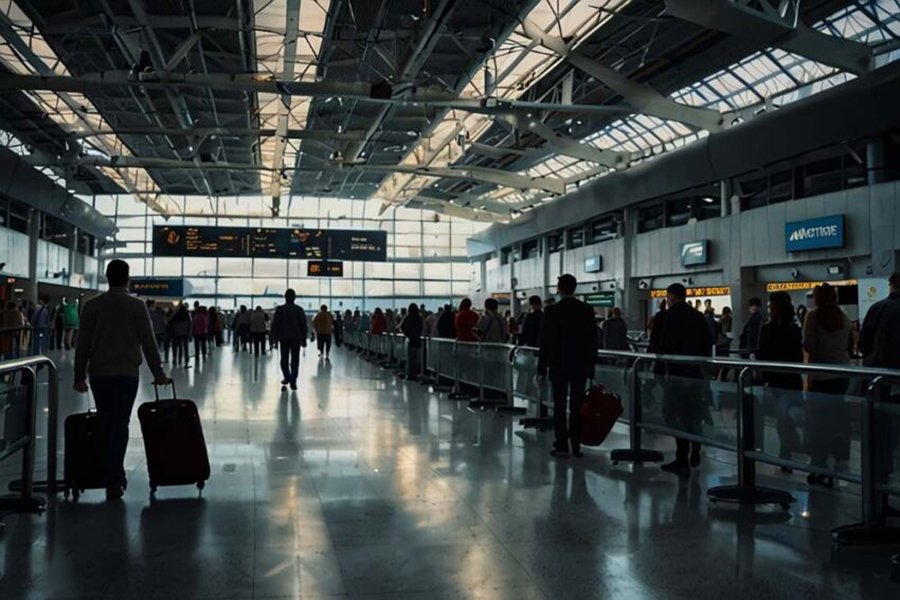читайте также
 Spain’s Real Estate: Record Prices and Falling Yields
Spain’s Real Estate: Record Prices and Falling Yields
 Fuel crisis at Seattle Airport: the Olympic Pipeline outage has disrupted supplies
Fuel crisis at Seattle Airport: the Olympic Pipeline outage has disrupted supplies
 European Hotel Construction Market Breaks Records: Upper Upscale Segment Reaches New Heights
European Hotel Construction Market Breaks Records: Upper Upscale Segment Reaches New Heights
 Middle East Hotel Construction Pipeline Hits Record High: 659 Projects and 163,816 Rooms Under Development
Middle East Hotel Construction Pipeline Hits Record High: 659 Projects and 163,816 Rooms Under Development
 New Rules for Greece’s Golden Visa: What Changes for Investors
New Rules for Greece’s Golden Visa: What Changes for Investors
 Holiday Travel 2025: Less Spending, More Generational Shifts — Deloitte’s New Forecast
Holiday Travel 2025: Less Spending, More Generational Shifts — Deloitte’s New Forecast

Photo: Travel and Tour World
The United States faced another wave of large-scale disruptions on November 21: more than 400 cancellations and nearly 3,500 delays affected several of the country’s major airports amid severe thunderstorms and heavy pressure on air traffic control services. The worst conditions were reported in Dallas, Chicago, Los Angeles, Phoenix, and Las Vegas — flights were pushed back for hours, and many routes disappeared from schedules entirely, according to Travel and Tour World.
Disruptions in Key Airport Hubs
A series of intense storm systems over the central and southern states became the main cause of the massive schedule breakdown. The strongest impact was felt at major transfer hubs that handle a significant share of domestic traffic. In Dallas, Chicago, and Denver, the average waiting time for departure exceeded an hour and a half: weather restrictions blocked takeoffs and landings, and crews and aircraft were unable to begin new flight cycles.
Los Angeles and Phoenix also faced significant disruption. Despite more stable local weather, the chain of delays originating in the central states spread to the West Coast. Airports were forced to reorder departures in real time, increasing pressure on ground services. One disruption triggered the next, and the entire system gradually slowed down throughout the day.
Massive Delays and Cancellations
Delays reached a nationwide scale: 3,484 flights were already operating outside the planned schedule, and the number continued to grow. American Airlines adjusted 670 flights — almost one in three of the carrier’s daily operations. Southwest reported more than 440 disruptions, while regional Envoy Air exceeded 200. This level of pressure means restoring normal operations could take not hours, but an entire day. Aircraft fail to return to their bases on time, crews reach their duty limits, and rerouting aircraft becomes a complex logistical challenge. Even after the weather stabilizes, the effects will be felt for a long time.
Cancellations have risen to 422. American Airlines accounts for the largest share — 112 flights — followed by Southwest (60) and Envoy (54). This means thousands of passengers are forced to change routes or wait until the next day, as flying according to schedule becomes impossible. Weather-related restrictions are compounded by a shortage of reserve crews and available slots for rescheduling flights. Several hubs have already warned that the effects will last at least until the next morning — and may continue if storm activity persists.
October Disruptions and Seattle Fuel Shortage
The current wave of delays comes on top of recent incidents that had already weakened the US aviation system. In late October, major airports across the country experienced large-scale disruptions: storms and failures in air traffic control systems led to hundreds of cancellations and thousands of delays. Hubs from New York to Nashville operated with significant interruptions, passengers spent the night in terminals, and carriers needed several days to restore aircraft rotation.
Additional pressure emerged on the West Coast. Since November 11, Seattle–Tacoma International Airport has been facing a persistent jet fuel shortage following the Olympic Pipeline incident. Due to restricted supply, the airport has been operating in a conservation mode: fueling volumes have been reduced, and airlines continue to reroute flights or increase intervals between departures.
What Passengers Should Do
Experts advise acting quickly and monitoring updates closely. Information in airline apps refreshes faster than airport departure boards, so checking flight status regularly is essential. Many routes already offer free rebooking options. For extended waits, airlines provide meals or accommodation, but passengers should confirm conditions and be aware of their rights.
The main recommendation is to stay prepared for a long wait. A charged phone, power bank, water, warm clothing, and patience will help navigate one of the most challenging travel days of the season. Once the weather stabilizes, the system will gradually recover — but for now, passengers must rely on updates and adjust their plans accordingly.





